Horus 45 was successfully recovered between Geranium and Lameroo on Sunday evening just on dusk. A full report will follow, but here is a photo gallery of the flight as a start!
Launch
Flight
Recovery
Recovery Crew

The Amateur Radio Experimenters Group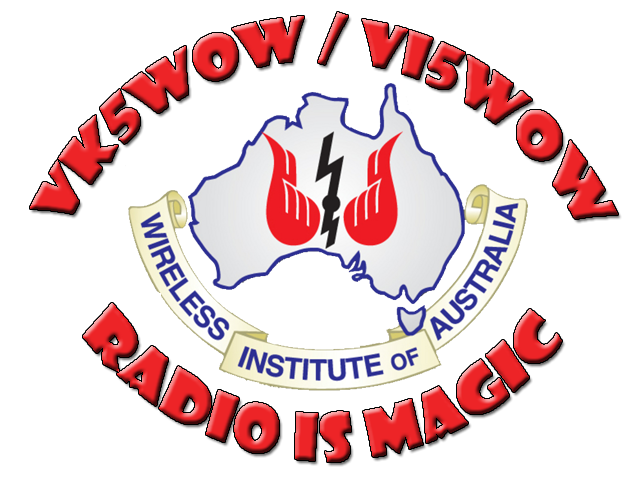 is please to announce that it will be supporting the WIA AGM & Convention weekend with a balloon launch. This launch will take place from Hahndorf Oval, as part of the “Come and Try Radio” activities day to be held on Sunday 21st May.
is please to announce that it will be supporting the WIA AGM & Convention weekend with a balloon launch. This launch will take place from Hahndorf Oval, as part of the “Come and Try Radio” activities day to be held on Sunday 21st May.
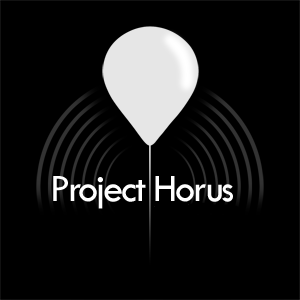 This event is aimed at promoting the many different facets of Amateur Radio and giving people the opportunity to learn about how to get involved. AREG will be manning two complete tracking stations at the event, one a fixed ground station and the other will be one of the chase cars decked out in the equipment we use to chase balloons in.
This event is aimed at promoting the many different facets of Amateur Radio and giving people the opportunity to learn about how to get involved. AREG will be manning two complete tracking stations at the event, one a fixed ground station and the other will be one of the chase cars decked out in the equipment we use to chase balloons in.
The main aim is to get more people interested in tracking the balloons!
Flight Payloads
The payloads are still being finalized, as the jet-stream has returned and there are concerns that the flight could be carried downrange much further than planned.
Balloon Repeater Frequencies
The balloon repeater will be heard on:
NOTE 1: The VHF frequency has changed this flight to avoid harmonic issues with the Wenet imaging payloads
NOTE 2: The repeater is built out of a received designed to receive Narrow FM (12.5kHz bandwidth) not the usual 25kHz wideband FM that amateurs use. Please keep your deviation down so that you can pass through the repeater without it closing it’s mute.
To transmit to the balloon at the maximum range of 800km (once the balloon reaches 100,000ft ++) you should only need approximately 10-20W and an 2-4dB gain antenna.
Receiving the balloon at 400km range in a handheld environment should be achievable, but to hear the repeater at the maximum range of 800km you should expect to need a 10dB gain Yagi for a 0.4uV capable receiver and 2dB feeder loss
This setup is much the same as the LEO satellites but without the high speed Doppler shift.
PLEASE MAKE SURE YOU CAN HEAR IT BEFORE YOU TRANSMIT!
Other Balloon Payloads
Other payloads being flown on this flight will include:
Images can be seen (here).
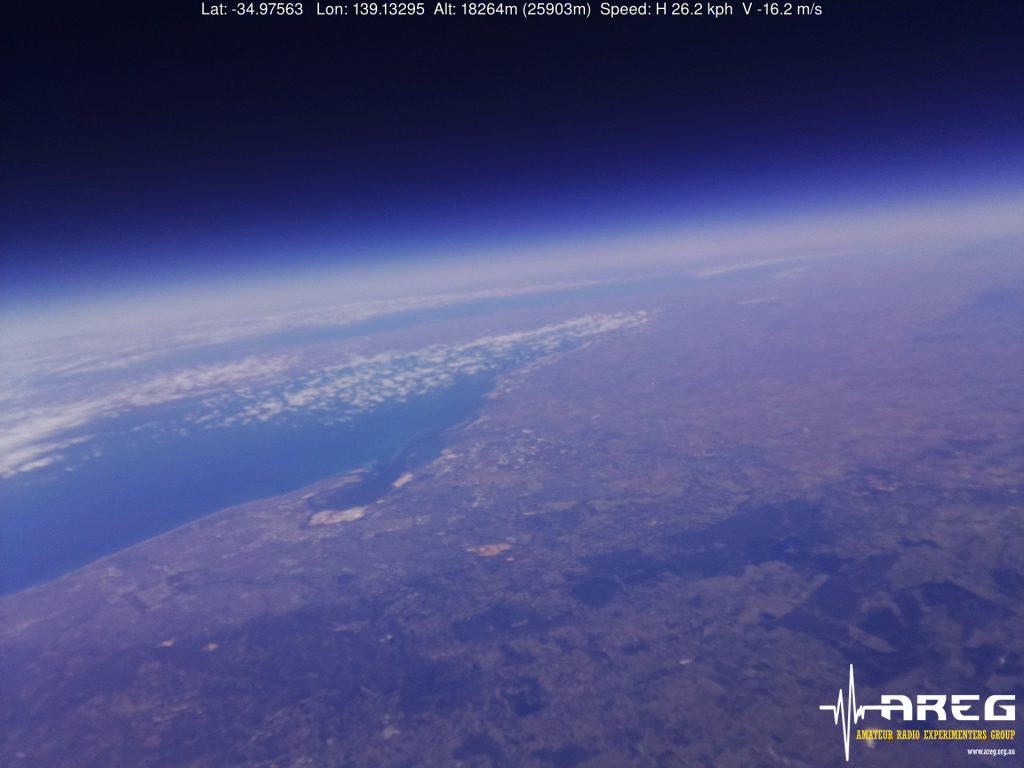 Tracking will again be available via www.habhub.org
Tracking will again be available via www.habhub.org
Flight Time and Launch Location
If you would like to learn more about how to get involved in tracking the balloon, take a look at the following resources on the club website, or come on down to the launch on Hahndorf Oval. Preparations will begin around 1.00pm, with liftoff planned for 2.00pm. (See the location marked “Amateur Radio Come and Try Day”.
WIA AGM & Convention Special Event Callsign to be Net Control on the balloon repeater
The WIA AGM & Convention special event call sign VK5WOW and VI5WOW will be heard via the balloon repeater during the event. Contacts with VI5WOW and VK5WOW through the balloon will qualify for the award certificate.
Full details of the Convention 2017 award are available via www.wia.org.au/members/wiaawards/agm2017/
UPDATE: The event went very well and everyone who attended spotted all of the canoes as they went by in both directions. Well done team!
Each year the Amateur Radio Experimenters Group supports the Marathon Canoe Club of South Australia’s River Paddling Marathon event as it travels from Berri to Morgan, a distance of over 200km, during the 3 day long weekend in June. (Read more about this event from the 2016 event report (here).
To prepare for the event, one of the exercises AREG runs is a canoe spotting practice day in conjunction with the Back to Back canoe race in Murray Bridge. Instigated last year as a training day for spotting canoes, we will again be venturing out to Sturt Reserve, Murray Bridge on Saturday May 6th.
The day will consist of AREG teams of two being set up with ~50m between them. The goal will be to see who can spot the most canoes (or best of all who can spot all of them). The canoe participants will be passing the location multiple times, so you will need to be good at tracking multiple moving targets.
Why are we doing this? To help you hone your skills at spotting canoes on the river. The participants of this event could be over the far side of the river, so spotting their numbers is something to be practiced so that when we have to track each and every canoe past a checkpoint at the RPM we are equipped with an understanding of the gear required to do so accurately. A day sitting beside the river isn’t exactly a bad thing either, with a sausage or two sizzling on the BBQ!
Times and Places?
Members participating in the practice day should plan to arrive in Murray Bridge at 12:00pm. The first canoes should be past shortly after 1:30pm and the event should be over by around 4-5pm.
Things to bring:
The afternoon is as much a social get together as it is a training exercise, so even if you are not coming to the RPM, who not come down and spend an afternoon by the river having a picnic?
Where will you find us? Look in the eastern end of Sturt Reserve. Liaison up close will be on 439.025 MHz FM Simplex.
Preparations continue for the High Altitude Balloon launch, 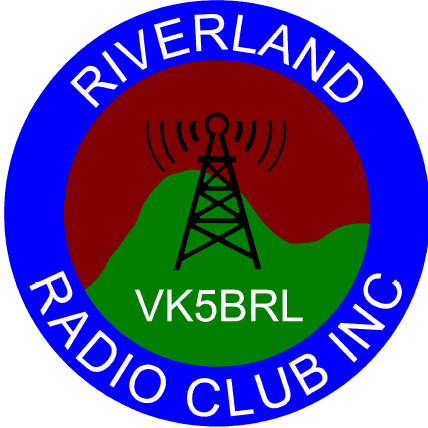 scheduled for Saturday morning from Overland Corner in the Riverland district of South Australia. This flight is one of the events that is planned as part of the BRL Weekend for the Riverland Radio Club.
scheduled for Saturday morning from Overland Corner in the Riverland district of South Australia. This flight is one of the events that is planned as part of the BRL Weekend for the Riverland Radio Club.
The flight track prediction has been quite unstable for a few days but now has settled down into a reasonably accessible area near Renmark. This launch is being conducted in conjunction with the Riverland Radio Club’s BRL Weekend event at the Overland Corner Hotel.
Renmark. This launch is being conducted in conjunction with the Riverland Radio Club’s BRL Weekend event at the Overland Corner Hotel.
Amateurs from across SA, VIC and NSW are invited to take part in one of the many amateur Radio facets of this flight, from receiving and relaying the telemetry, making contacts through the new balloon repeater and monitoring either direct or via the Internet the Wenet HD imagery payload.
Balloon Repeater Frequencies
This is the first test flight of a new experimental cross band voice repeater that has been built with weight in mind to fly under our balloons.The balloon repeater should be heard on:
Please note that this repeater is experimental, and may have performance issues during the flight.
To transmit to the balloon at the maximum range of 800km (once the balloon reaches 100,000ft ++) you should only need approximately 10-20W and an 2-4dB gain antenna.
Receiving the balloon at 400km range in a handheld environment should be achievable, but to hear the repeater at the maximum range of 800km you should expect to need a 10dB gain Yagi for a 0.4uV capable receiver and 2dB feeder loss
This setup is much the same as the LEO satellites but without the high speed Doppler shift.
PLEASE MAKE SURE YOU CAN HEAR IT BEFORE YOU TRANSMIT!
Additionally, the receiver used in the repeater (a Dorji DRA818) appears to have quite sharp receive filters, which results in the repeater dropping out if the input signal is over-deviated (>4.8 kHz dev). Please talk using a regular speaking voice when using the repeater to avoid issues.
Special Event Callsign via the Balloon
As part of the WIA AGM & Convention weekend promotion, we also hope to activate VK5WOW, the special event callsign for that event, via the Balloon Repeater!
Contacts with the special event callsign via the balloon will qualify towards the Convention Award. The flight payloads will be one of the topics presented at the convention by Mark VK5QI, so make a contact through the balloon and then come on down to Hahndorf between May 19-21st to hear about how Project Horus flys and how you too can get involved in this fascinating aspect of the hobby!
Other Balloon Payloads
Other payloads being flown on this flight will include:
Images can be seen (here).
Tracking will again be available via www.habhub.org
If you would like to learn more about how to get involved in tracking the balloon, take a look at the following resources on the club website.
Caveats – The weather may beat us
There is a small wrinkle in the plans currently and that is the weather. There have been significant rainfalls across the region in the last few days which may have made many of the dirt roads we might need to use impassable. The team is monitoring the situation and will advise if we have to call it off due to access. It currently depends on where the landing zone ends up. Stay tuned, and understand we are trying to plan a way to ensure we do get into the air on Saturday!
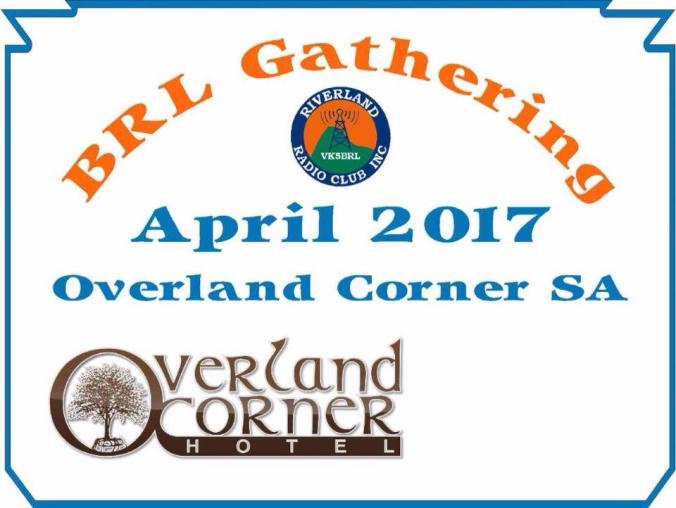
 The Amateur Radio Experimenters Group is please to announce that it will be supporting an Amateur Radio focused balloon launch, to take place at the Riverland Radio Club’s VK5BRL Weekend event at Overland Corner Hotel in the Riverland.
The Amateur Radio Experimenters Group is please to announce that it will be supporting an Amateur Radio focused balloon launch, to take place at the Riverland Radio Club’s VK5BRL Weekend event at Overland Corner Hotel in the Riverland.
This event is aimed at bringing together members of  the Riverland Radio Club and amateurs from across SA & Victoria, in particular those who participate in the VK5BRL bi-weekly net on HF (heard on 7115kHz at 8.30am Wednesday and Saturdays).
the Riverland Radio Club and amateurs from across SA & Victoria, in particular those who participate in the VK5BRL bi-weekly net on HF (heard on 7115kHz at 8.30am Wednesday and Saturdays).
The morning festivities start off with an early breakfast of coffee, tea and of course bacon, eggs and sausages. This is then followed by the BRL net. The AREG are looking to launch the balloon some time around 11am (to be confirmed) when the NOTAM is raised later this week.

 AREG & Project Horus Involvement
AREG & Project Horus Involvement
The AREG will be marking this weekend with a special balloon flight. It has been some time since the flying repeater was heard on air, so it was felt that it was time to put some more amateur radio back into the balloon flights.
Balloon Repeater Frequencies
The balloon repeater will be heard on:
Please note that this repeater is experimental, and may have performance issues during the flight.
To transmit to the balloon at the maximum range of 800km (once the balloon reaches 100,000ft ++) you should only need approximately 5-10W and an 2-4dB gain antenna.
Receiving the balloon at 400km range in a handheld environment should be achievable, but to hear the repeater at the maximum range of 800km you should expect to need a 10dB gain Yagi for a 0.4uV capable receiver and 2dB feeder loss
This setup is much the same as the LEO satellites but without the high speed Doppler shift.
PLEASE MAKE SURE YOU CAN HEAR IT BEFORE YOU TRANSMIT!
Additionally, the receiver used in the repeater (a Dorji DRA818) appears to have quite sharp receive filters, which results in the repeater dropping out if the input signal is over-deviated (>4.8 kHz dev). Please talk using a regular speaking voice when using the repeater to avoid issues.
As we will be flying from Overland Corner instead of near Adelaide, coverage at apogee should almost reach Canberra. Contacts from Melbourne to Adelaide through the balloon should definitely be possible.
Other Balloon Payloads
Other payloads being flown on this flight will include:
Images can be seen (here).
Tracking will again be available via www.habhub.org
If you would like to learn more about how to get involved in tracking the balloon, take a look at the following resources on the club website.
WIA AGM & Convention Special Event Callsign to be Net Control on the balloon repeater
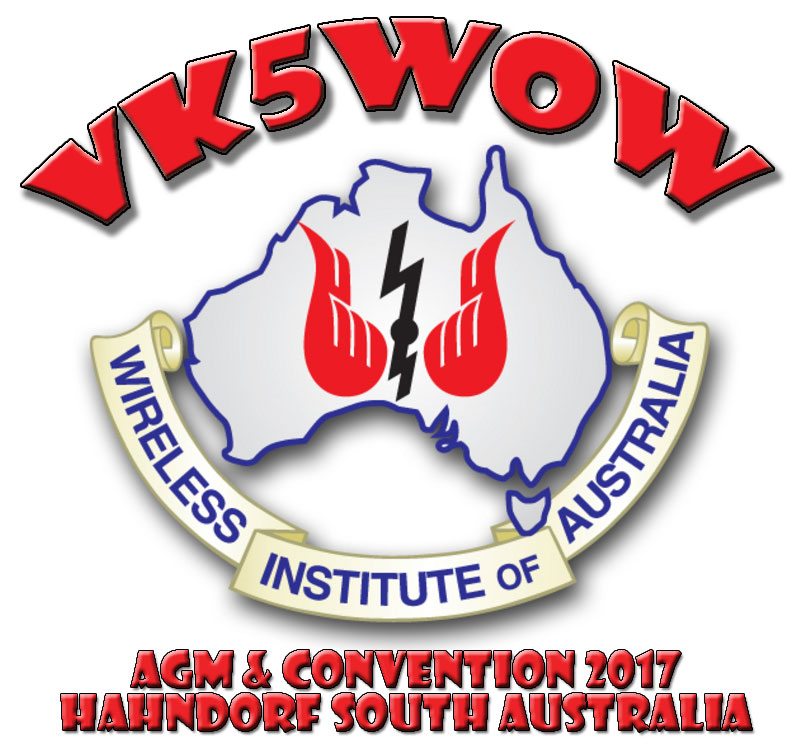 The Riverland Radio Club will be activating the WIA AGM & Convention special event call sign VK5WOW via the balloon repeater during the event. Contacts with VK5WOW through the balloon will qualify for the award certificate.
The Riverland Radio Club will be activating the WIA AGM & Convention special event call sign VK5WOW via the balloon repeater during the event. Contacts with VK5WOW through the balloon will qualify for the award certificate.
Full details of the Convention 2017 award are available via www.wia.org.au/members/wiaawards/agm2017/
Stay tuned for further details as the flight is finalised. We will announce the final flight time later this week as well as the predicted balloon track.
Introducing the DX Buster(tm)!
SORRY! ALL SOLD OUT on APRIL 1st 2017 – Stay tuned next year for more Amateur Radio products from the mad scientists division of the Amateur Radio Experimenters Group!
After months of rigorous testing, the Amateur Radio Experimenters Group Inc is pleased to announce the beta version of our new DX Buster(tm)! is nearly ready for initial release. What is it you might ask? Well, it is designed to help you to break through pile ups during DX Contests and DXPeditions, ensuring your signal is the one heard clear and true, first time, every-time!
There will be no more disappointment that the DX got away when you are using a DXBuster!(tm), even if you are only a small 100W pistol or 400W VK “high power” station located more than double the distance from that rare DX station compared to the majority (as is often the case when comparing VK to Europe, North America and Japan where they run 1kW or more). Now, with DX Buster!(tm) on your team, you can rest assured your signal will always be clearly heard among the pileups at the DX stations end, guaranteeing you will get that rare one in your log, even with modest power.
How does it work?
DX Buster!(tm) is a DSP device you insert into your microphone audio stream, and then also connect to the Internet. It works by mixing your transmitted audio with an anti-phase, time correlated / corrected version of the signals that the DX station is listening to, based on what is being received via any WebSDR located close to the major source of the DX calling pile-up stations.
Using patented Flux capacitor technology, and augmented by feeds from the Reverse Beacon and PSK Reporter systems tuned to the WSJT JT65 networks as well as space weather predictions from the NOAA and Australian Bureau of Meteorology, the propagation channel between your station and the rare DX is computed. Then, the anti-phase signals matching the majority of the pile up stations within 4kHz of your signal are delay matched to your station and then injected into your audio. The rest follows the laws of physics! When the out of phase signals are combined at the DX stations receiver with the other pile up traffic, that traffic is attenuated, while your own audio laid over the top passes through unaffected. The end result is a minimum 10-30dB improvement in your apparent signal to noise ratio as measured at the DX station.
Don’t quite believe it? Take a look at the following waterfall charts and sample audio streams to be convinced!
How can I get one?
Currently only a prototype of the unit is available, as a number of technical details are still being refined to make it adaptable to as many transceivers as possible. As soon as these are resolved, we will open our books for orders!
Keep watching the AREG website for further details!
 AREG finally had the weather smile on us today with a near textbook launch for Horus 43. This flight, conducted for Rostrevor College through LaunchBox, had been previously delayed multiple times due to either ground conditions, upper atmosphere conditions or both, so it was great to see it finally in the air.
AREG finally had the weather smile on us today with a near textbook launch for Horus 43. This flight, conducted for Rostrevor College through LaunchBox, had been previously delayed multiple times due to either ground conditions, upper atmosphere conditions or both, so it was great to see it finally in the air.
Ground Preparations
The ground crew saw some new faces get involved today which was great. Balloon filling and handling was undertaken by Mark VK5QI, Darin VK5IX, Gary VK5FGRY, Grant VK5GR, Will VK5AHV, Marcus VK5WTF and Kim VK5FJ. Filling and liftoff went without a hitch!
Payloads
The payloads flown on this flight included:
The images collected from Wenet were again spectacular – we never get tired of looking through what the balloon can see during it’s flight.
On the Ground before Liftoff
Ascent
Landing
Note how close some of the shots of the River Murray are towards the end of this set!
Chase & Tracking Teams
Two primary chase teams set out this time to recover the balloon payloads. Mark VK5QI lead the first team with Gary VK5FGRY and Will VK5AHV, while Darin VK5IX and his son headed out in the second.
Marcus VK5WTF meanwhile carried out his first shakedown attempt at kitting his vehicle out as well. After launch, Marcus headed to Bear Rock lookout near Palmer to join Peter VK5KX who again provided our primary Wenet downlink station. Grant VK5GR also paid Peter a visit and got to see the ground tracking side of the operation for the first time! We were also visited by Tim VK5ZT who decided to pay us a visit – great to see you out and about Tim!
Recovery went well in the end, with the teams being there for landing. They captured photos of the balloon moments before touchdown. 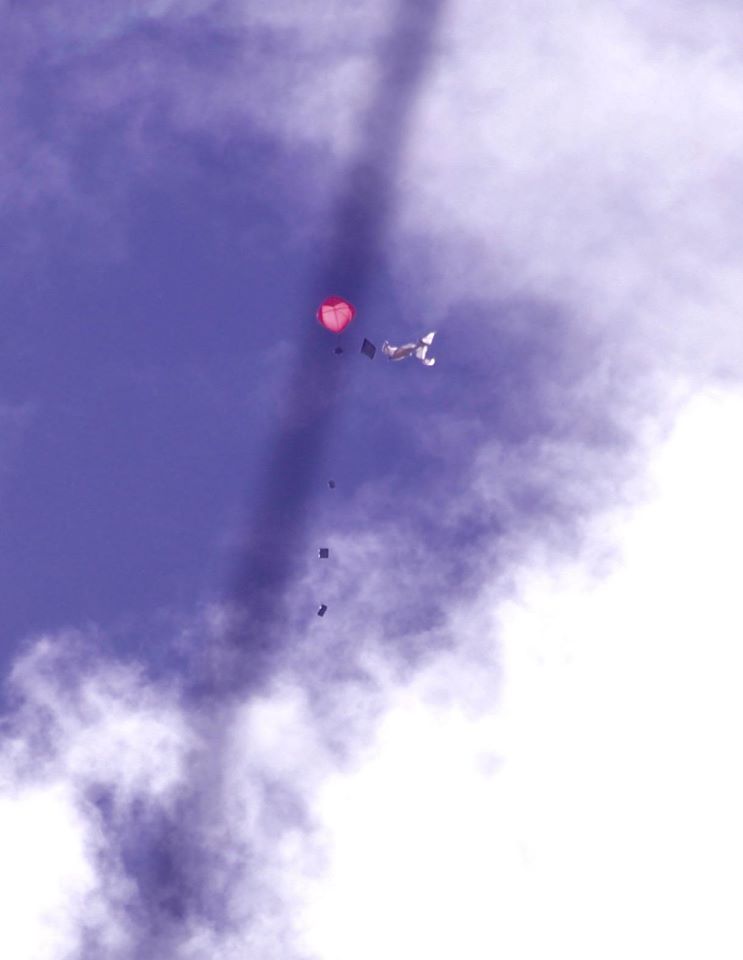
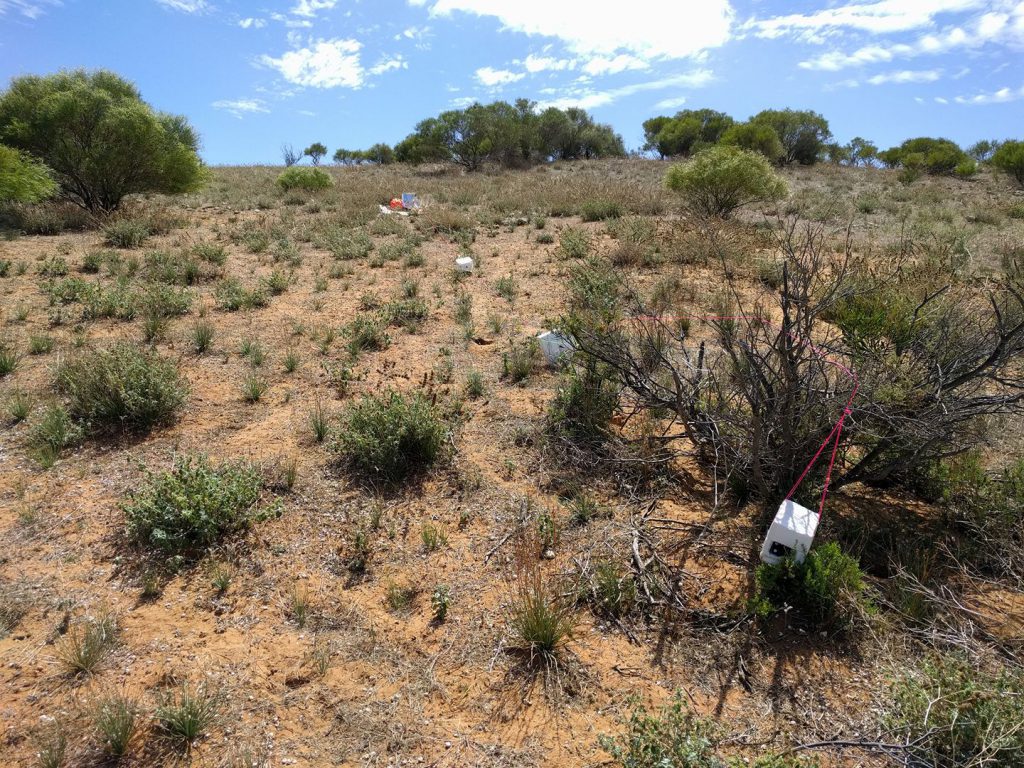
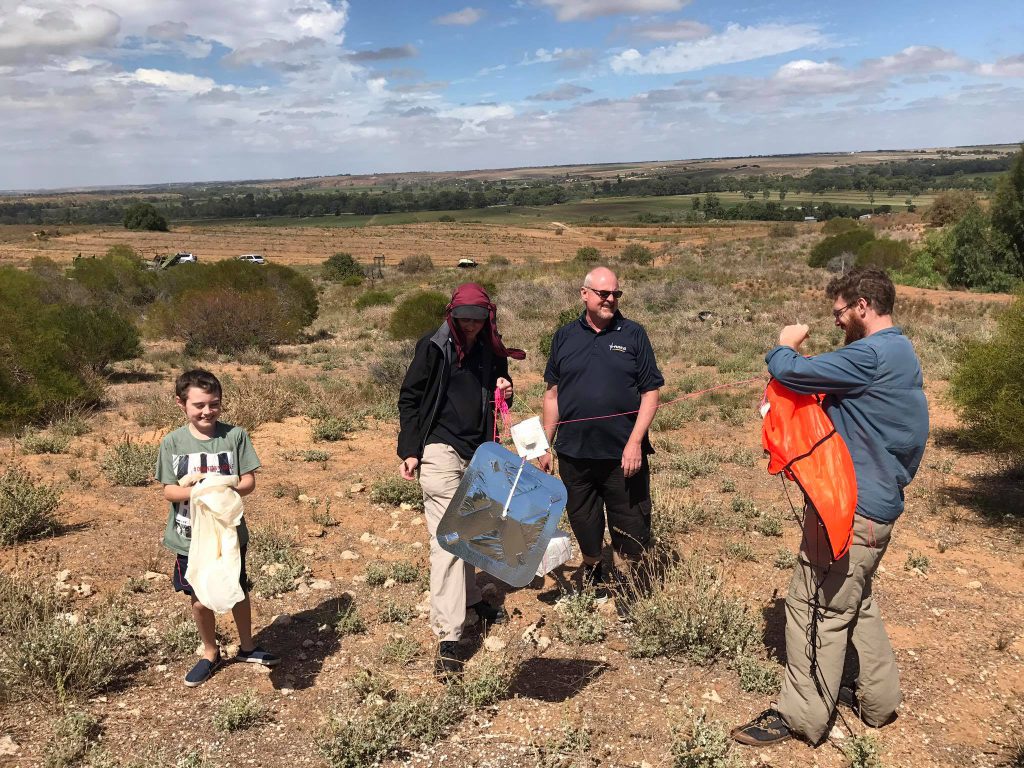
Tracking Network
The tracking network continues to grow as well. We saw some new ground stations participate in collecting the Wenet image telemetry for the first time this flight! Stations who contributed to the image collection this time included:
VK5FJ, VK5QI, VK5EU, VK5KX, VK5DF
Welcome aboard to our first timers!
On the RTTY tracking side, there was a large group of participants. The following give you an idea of the magnitude of each station’s contribution – some from as far away as 300km from the launch site!
Flight Path
The flight path itself was pretty much textbook, with one minor wrinkle. It was planned for the flight to exceed 28-30km, however this time the balloon burst early. This caused some tense moments during landing when it started getting very close to the River Murray! There were some thoughts that it might go swiming at one stage, however thankfully that was averted.
Flight Statistics
[table “” not found /]Conclusion
Another successful flight and one we are happy to finally be able to complete.
Til next time – 73 from the Project Horus team
The fourth attempt to Fly Horus 43 is going to be made for LaunchBox and Rostrevor College this coming Sunday. The predictions look good and the ground conditions are currently forecast to be favourable. This time we hope to have a successful liftoff!
Tracking by stations in Adelaide and beyond will again prove most valuable for the flight. Beacons to look for will be:
Tracking will again be available via www.habhub.org
Liftoff is planned for 10.00am Sunday morning.
More information will be posted as we get closer to liftoff!